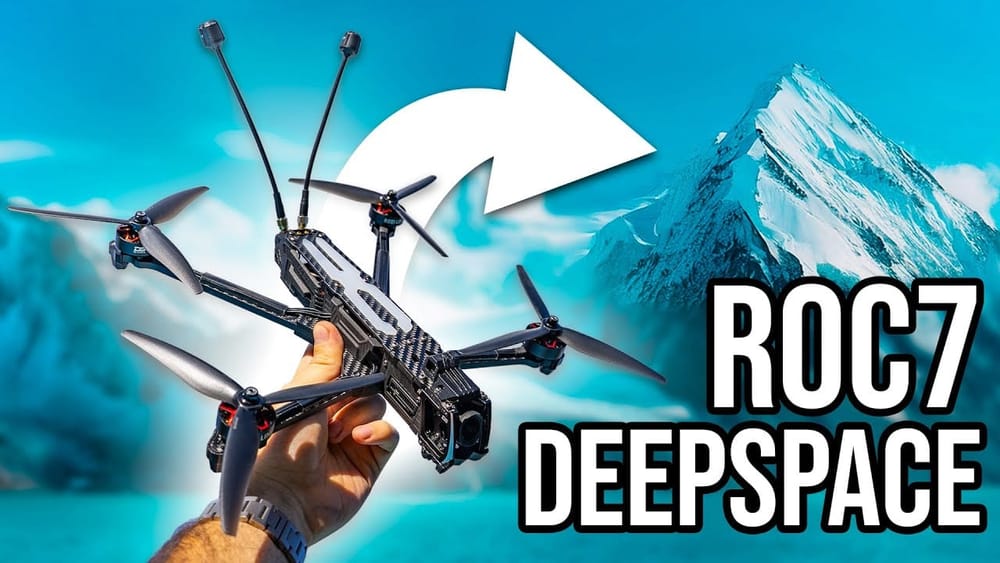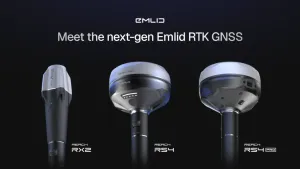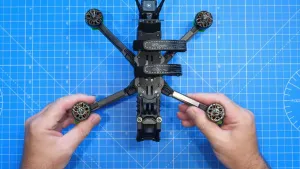Rimzler puts the DeepSpace ROC7 through unboxing, build and three real-world flights to see whether a 7.5‑inch long-range quad can behave like a nimble 5‑inch. The result matters for pilots who want both range and clean handling without lugging a full‑on cine rig.
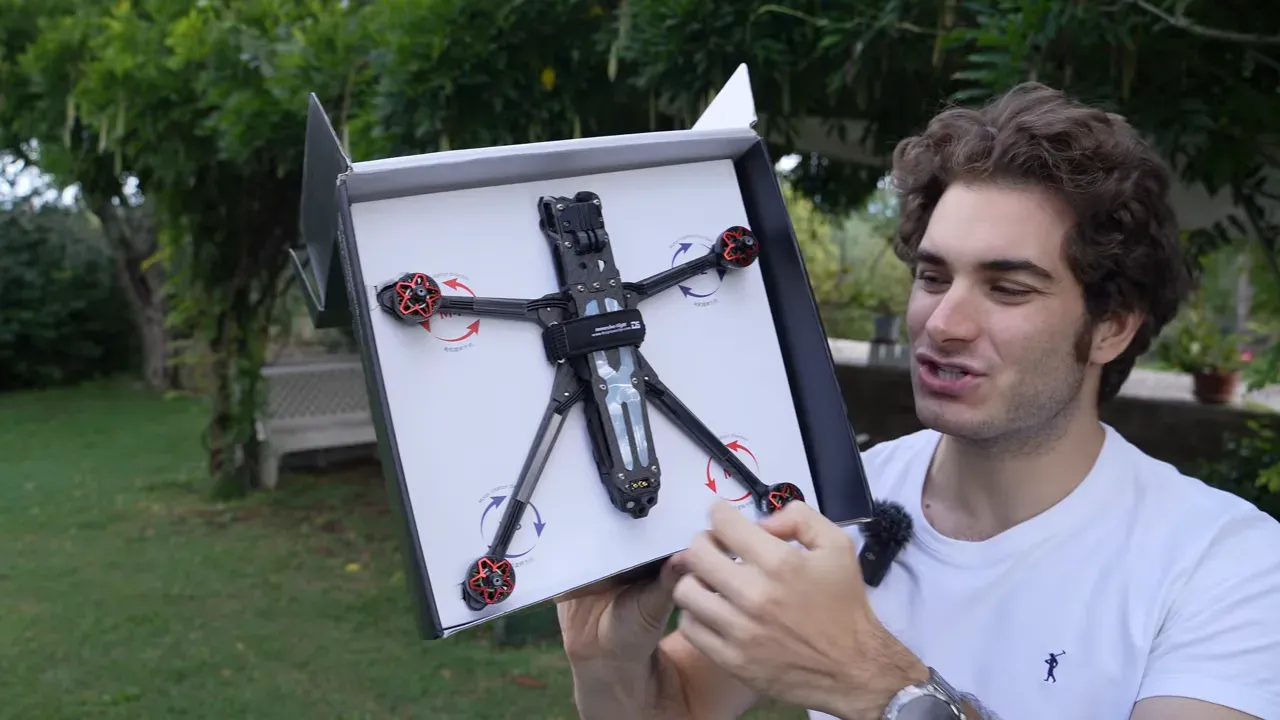
TL;DR: the Roc7 is well built, GPS locks fast, and the tune is impressively locked-in. It flies closer to a 6‑inch than a 5‑inch — still agile, but with predictable aerodynamic quirks under certain maneuvers. Flight time with sensible 6S lipos sits in the 11–14 minute band depending on style and battery condition.
Why this test matters
Long-range quads promise endurance and stable video capture. Many of them arrive heavy or soft in the sticks. Rimzler targets pilots who want range without losing sharp handling. The ROC7 claims a sweet spot: a dead‑cut 7.5‑inch platform with a focus on weight and component layout. This test checks whether the promise holds up in the field.
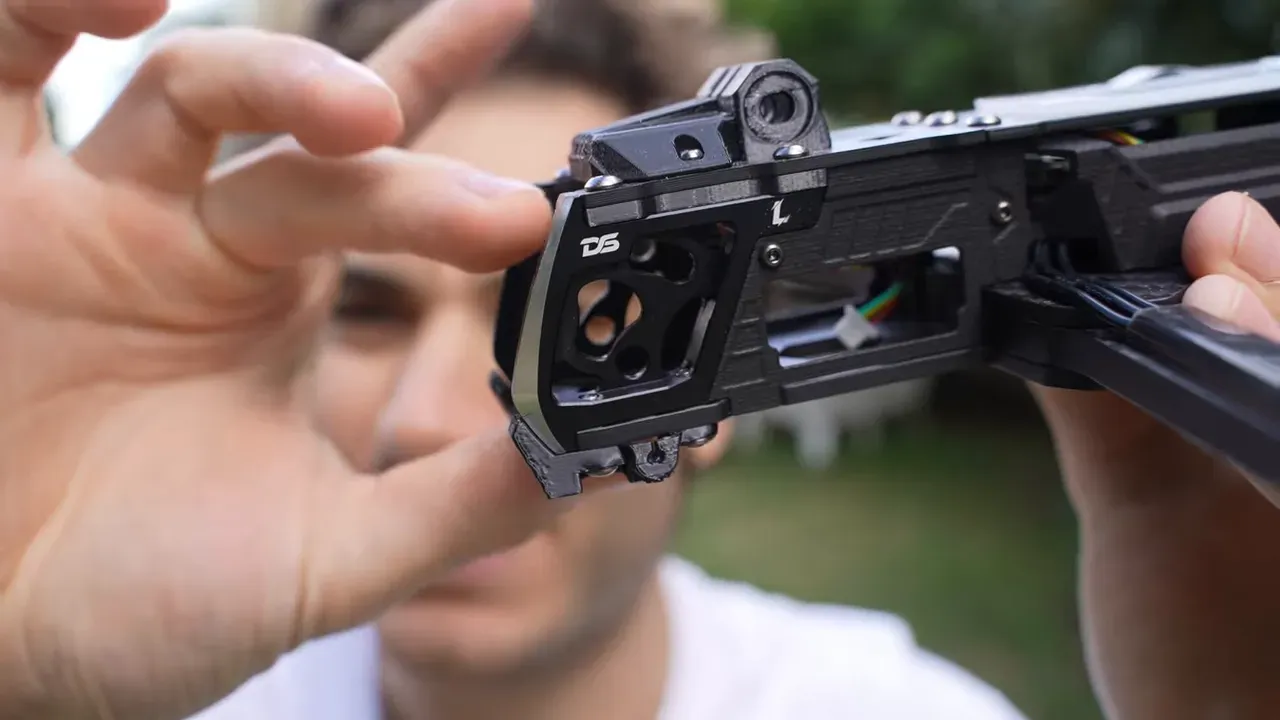
What’s in the box and first impressions
The package includes two sets of GemFans 7.5‑inch props, mounts for cameras and receivers, pigtail antenna extensions, a GoPro mount screw and a spare battery strap. The drone itself feels solid. Aluminium front canopy, TPU side panels, long rear arms and a clean battery tray make a strong first impression.
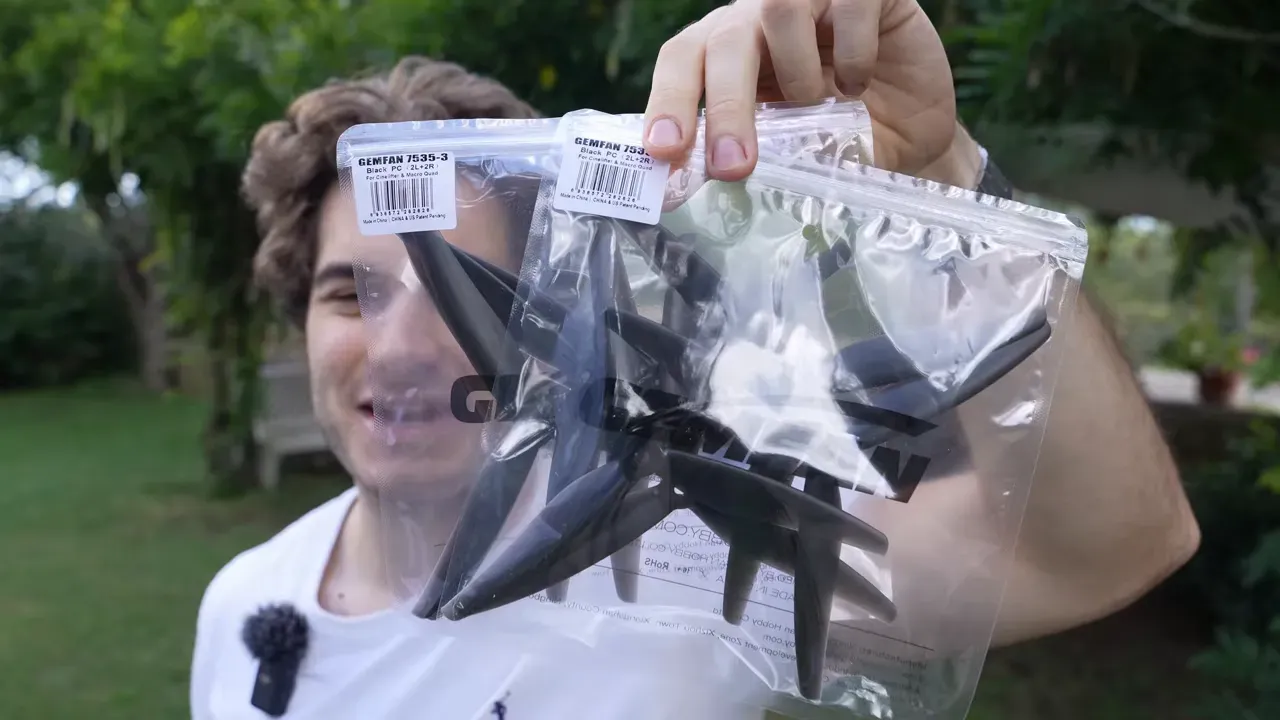
Chassis details matter. The build uses 6mm rear arms, 2mm top plate and 3mm bottom plate carbon. The frame is a dead‑cut layout, so props sit out of camera view. That helps for cinematic shots and reduces prop artefacts during long‑range runs.
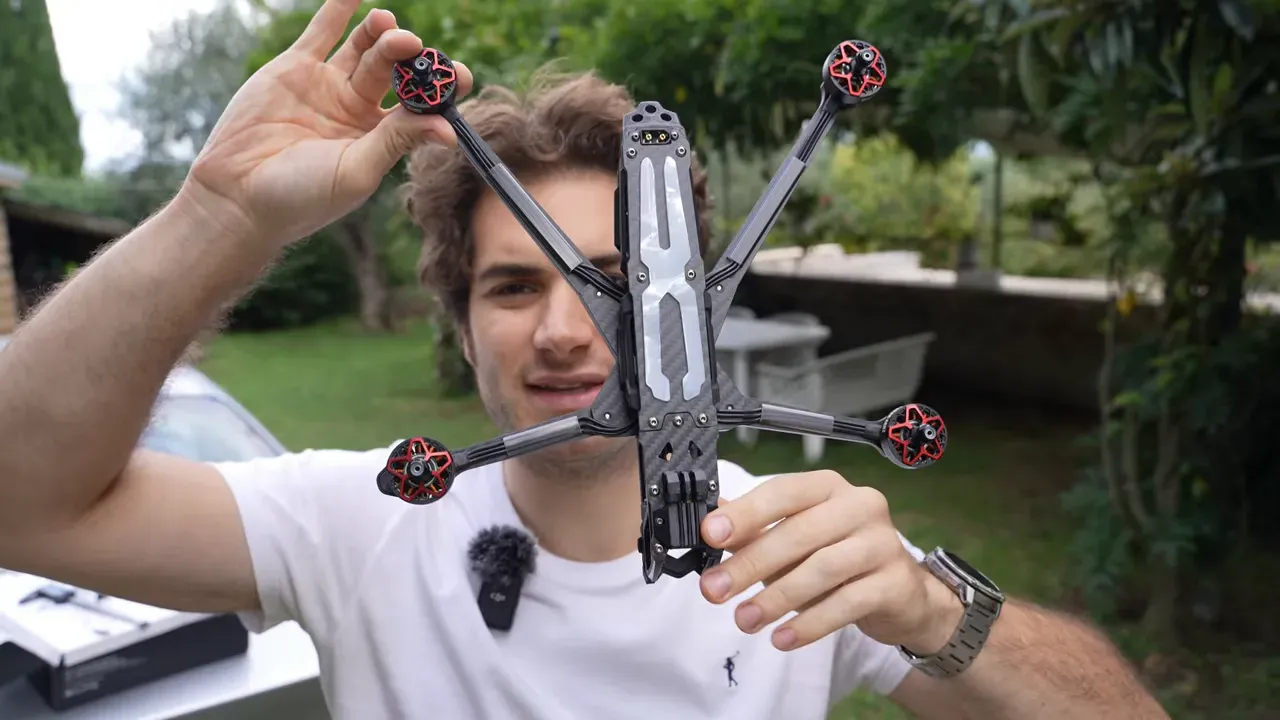
Hardware summary
The supplied motors are DeepSpace red‑line 2807 1350KV. Power is handled by a dual‑board stack: F7 flight controller plus a 60A BLHeli_32 ESC. The USB‑C port is routed to the rear, a buzzer sits underneath and an M10 front GPS gets a prominent forward mount. No magnetometer is attached to the GPS module, but its placement cuts antenna interference.
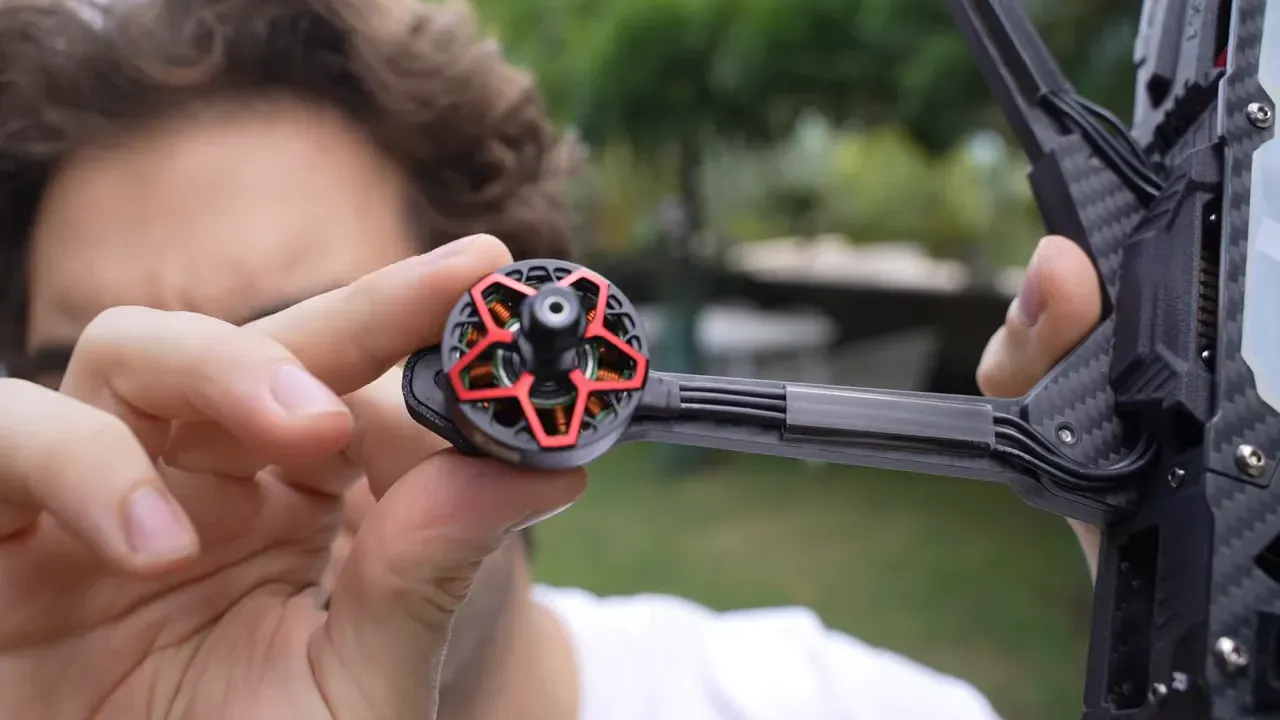
Weight with an O4 Pro camera installed comes in at around 672 grams — roughly 130g lighter than a comparable Mod 7 build Rimzler referenced. That weight focus should translate to better efficiency and handling, at least on paper.
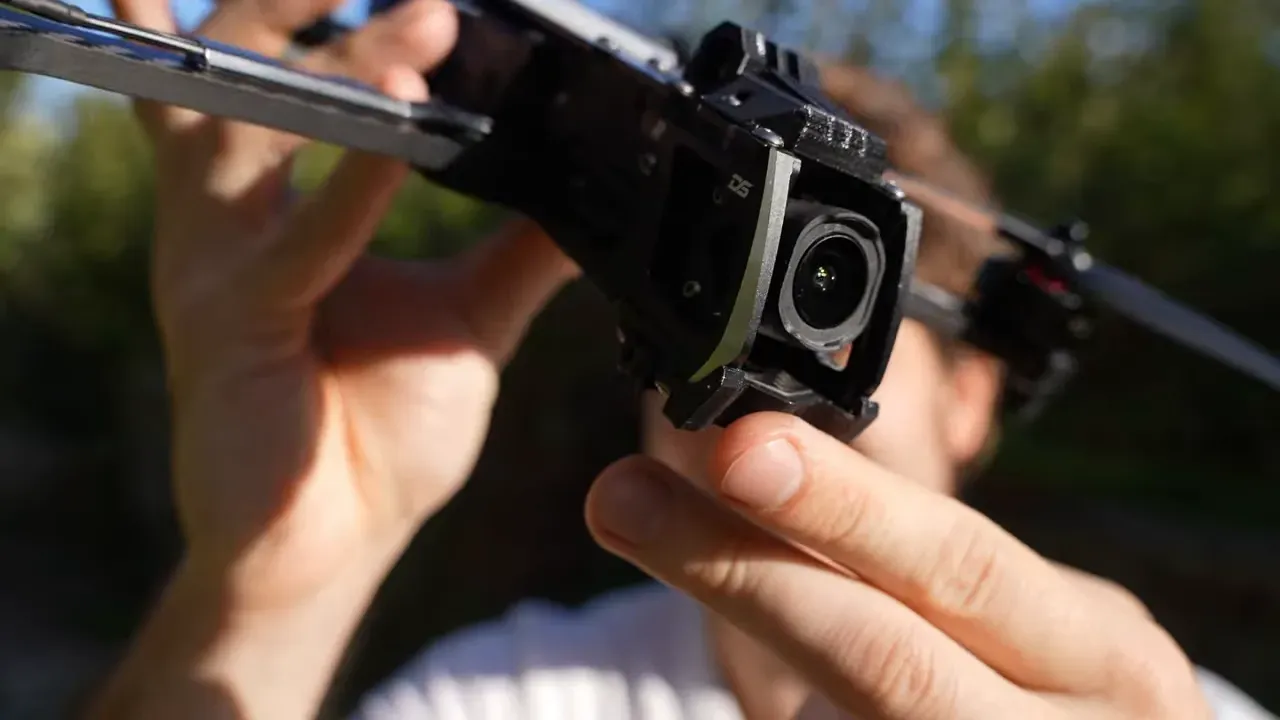
Build and camera integration
The camera cutout gives significant tilt range. Minimum angle sits low, roughly 3–5 degrees, and it can pitch up toward 45 degrees. The XT60 connector is flush with a long silicone battery pad, and the GPS sits well away from the antennas, which reduces noise and helps the satellite lock times.
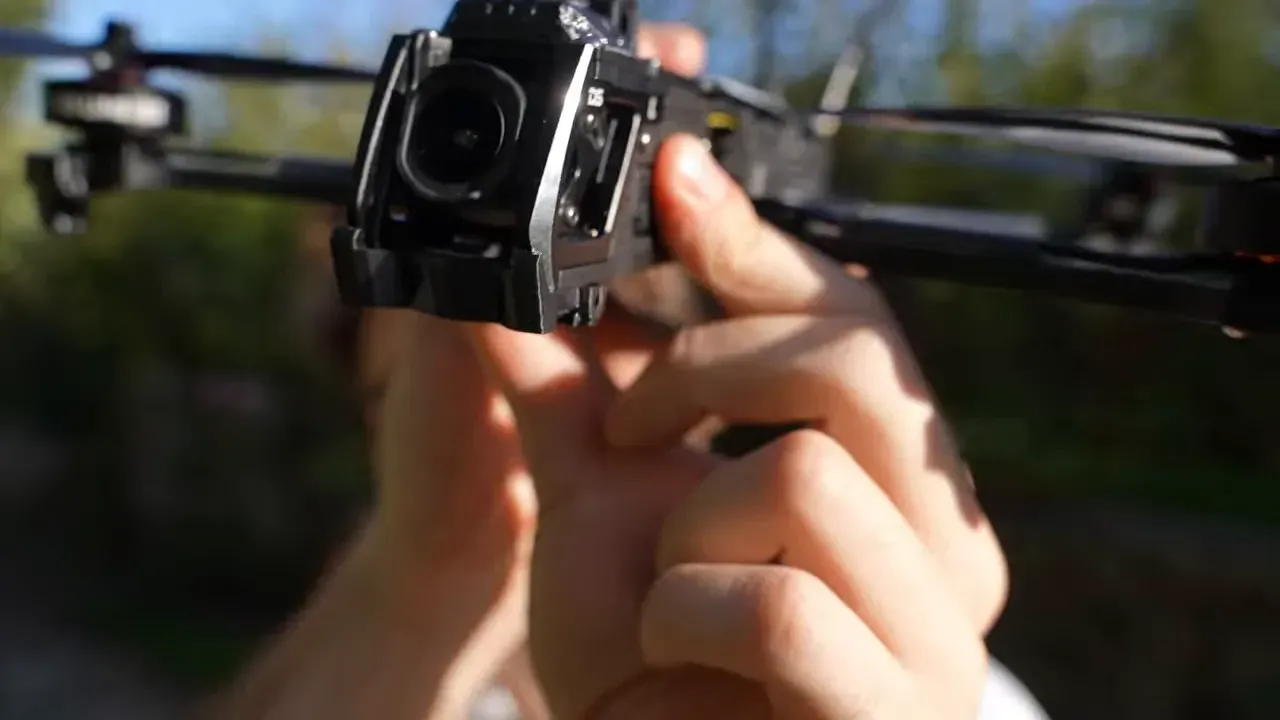
Test plan — batteries and flight modes
Rimzler flew the Roc7 with three battery sizes to test responsiveness and endurance: a HobbyKing Turnigy Graphene 1600mAh 6S, a CNHL 2200mAh 6S, and a 3300mAh 6S pack for range/endurance checks. Flying styles ranged from mixed acro to slow long‑range runs to assess tune and efficiency.
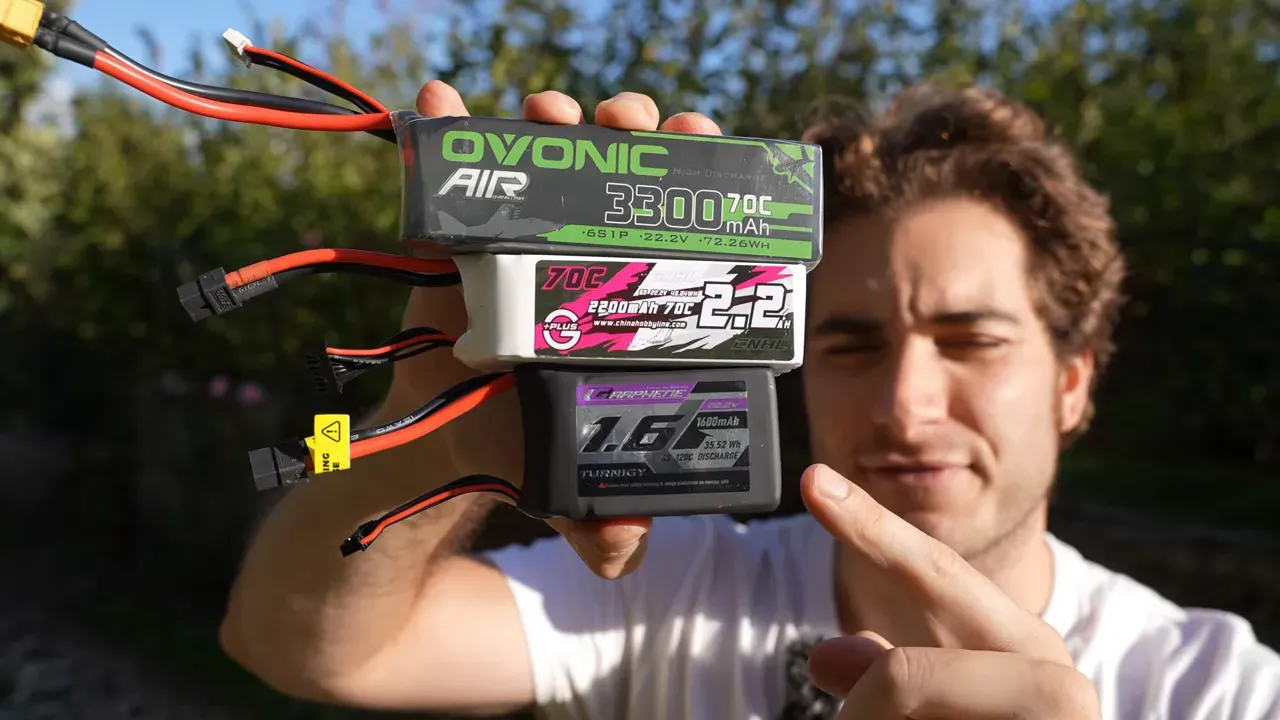
GPS and startup behaviour
Cold starts held a pleasant surprise: the GPS acquired satellites rapidly. After plugging a battery the system had 14 satellites in about ten seconds. For long‑range pilots, that fast lock reduces setup time and lowers risk on the first climb.
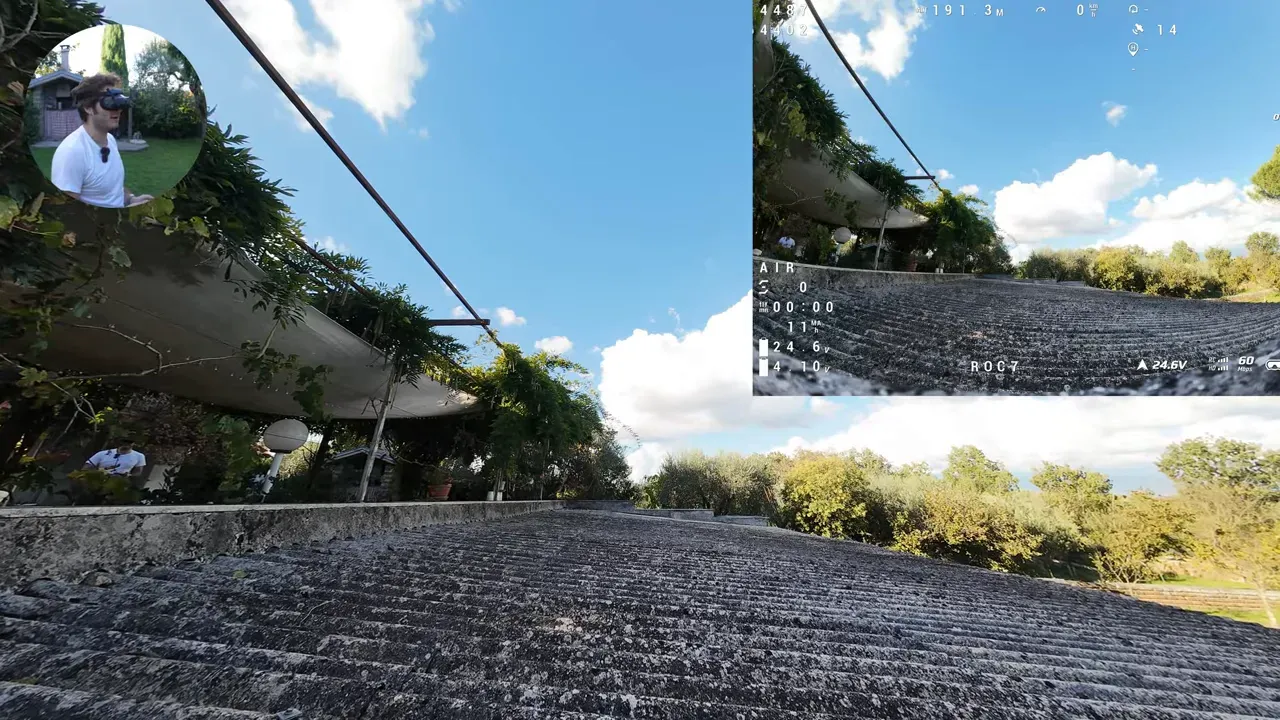
First flight with 1600mAh 6S — liveliness and tune
On the little 1600mAh pack the ROC7 felt punchy. Rimzler emphasised that 7‑inch tuning historically lags behind 5‑inch setups, but the Roc7 came out of the box with tight PID values and a locked‑in feel. It does not hover like a 5‑inch during tight spirals, however — props spool and push air, producing a predictable forward bias during some maneuvers.
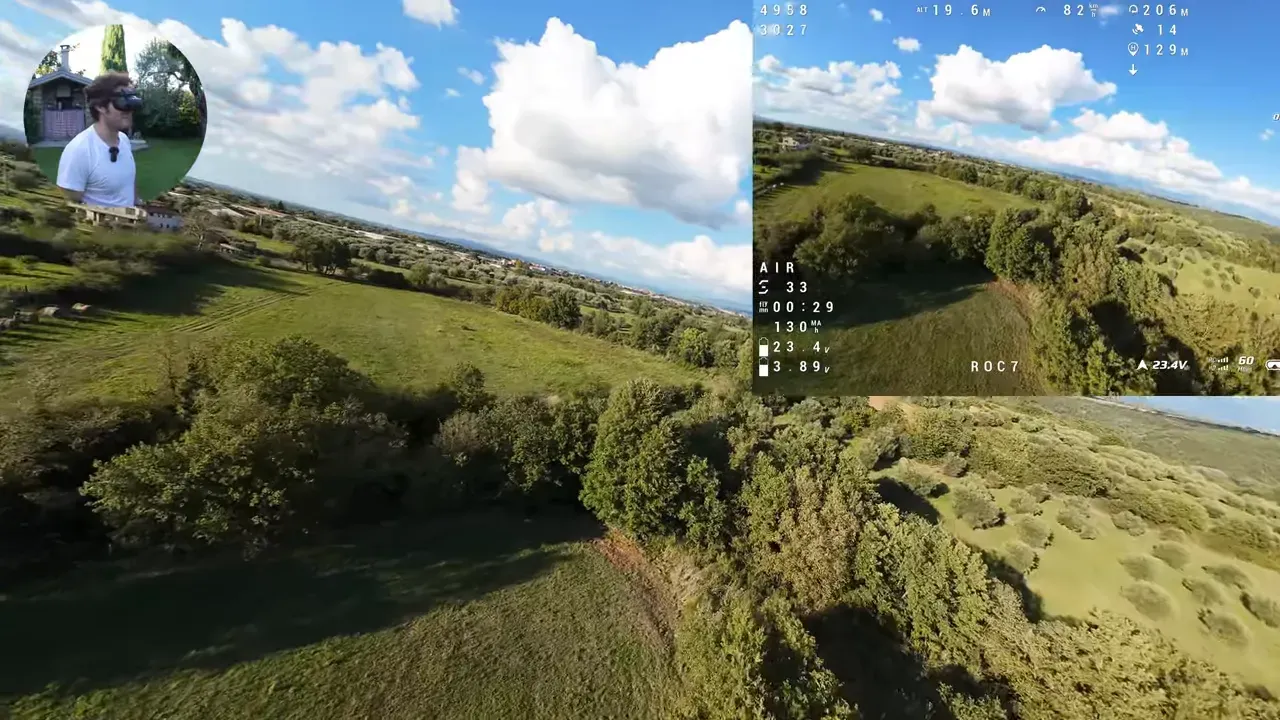
That airflow effect shows during sustained spirals or tight orbiting. The quad will push slightly forward or inward when the props increase RPM to regain control. It’s not a control failure — more an aerodynamic character trait. Pilots will adapt quickly.
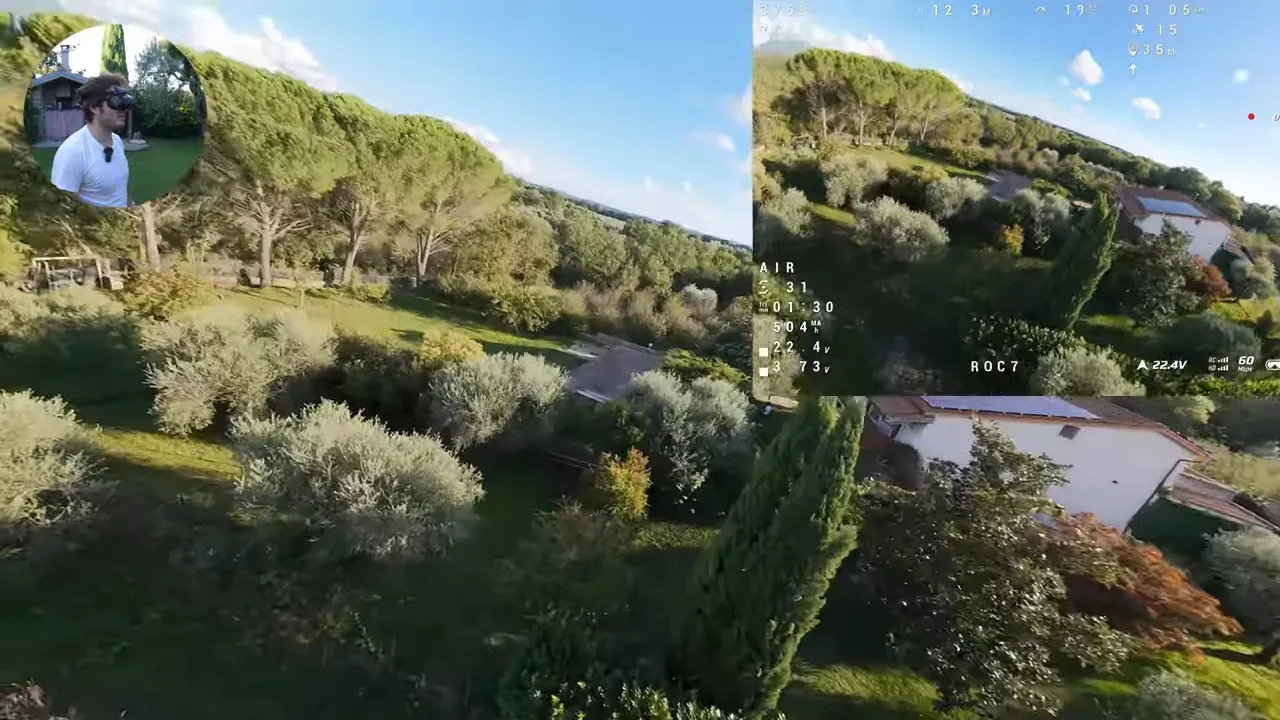
Return‑to‑home and safety functions
RTH behaviour looked correct. Rimzler tested automatic return and watched for vertical oscillation. The ROC7 came back steady — no sudden climbs or jerks. Proper RTH tuning is a practical safety feature, particularly when flying long range.
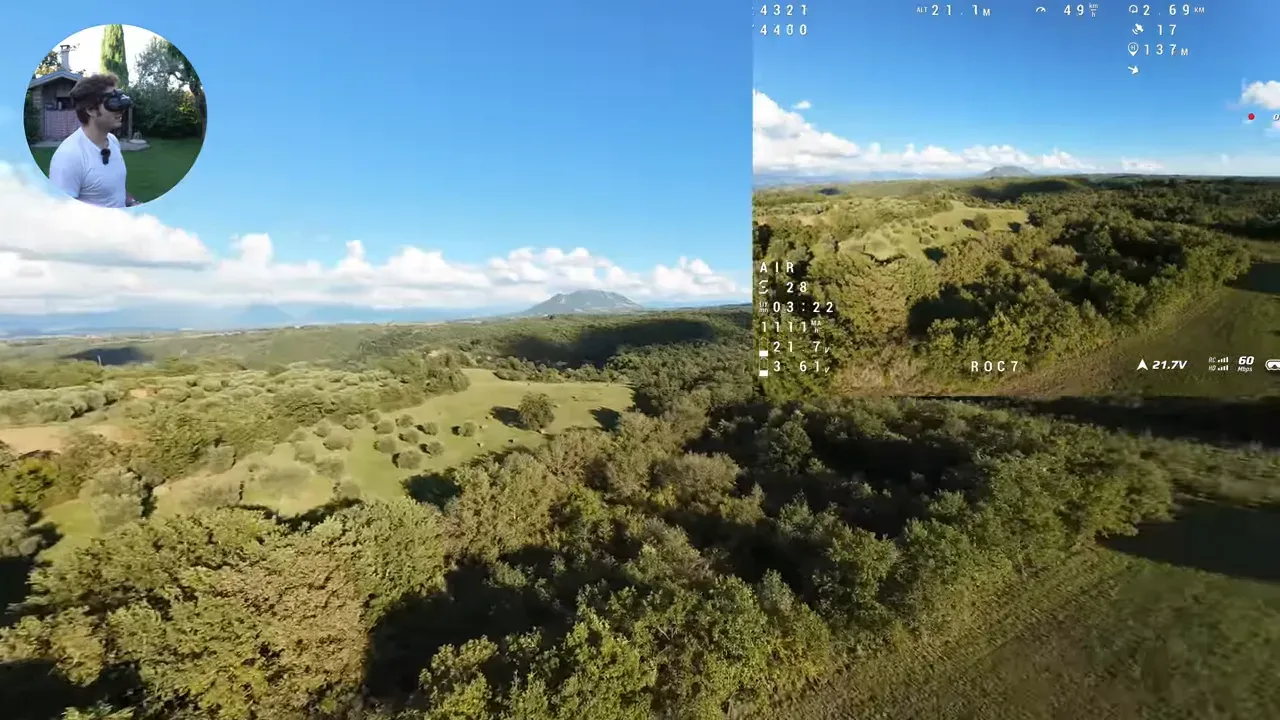
Second flight with 2200mAh 6S — inertia and orbiting
The 2200mAh pack made the airframe feel heavier and more stable during aggressive inputs. The added inertia reduced the forward push seen with the lighter battery. Orbital flight around trees was comfortable at 70–80 km/h. The quad kept composure without requiring frequent trims.
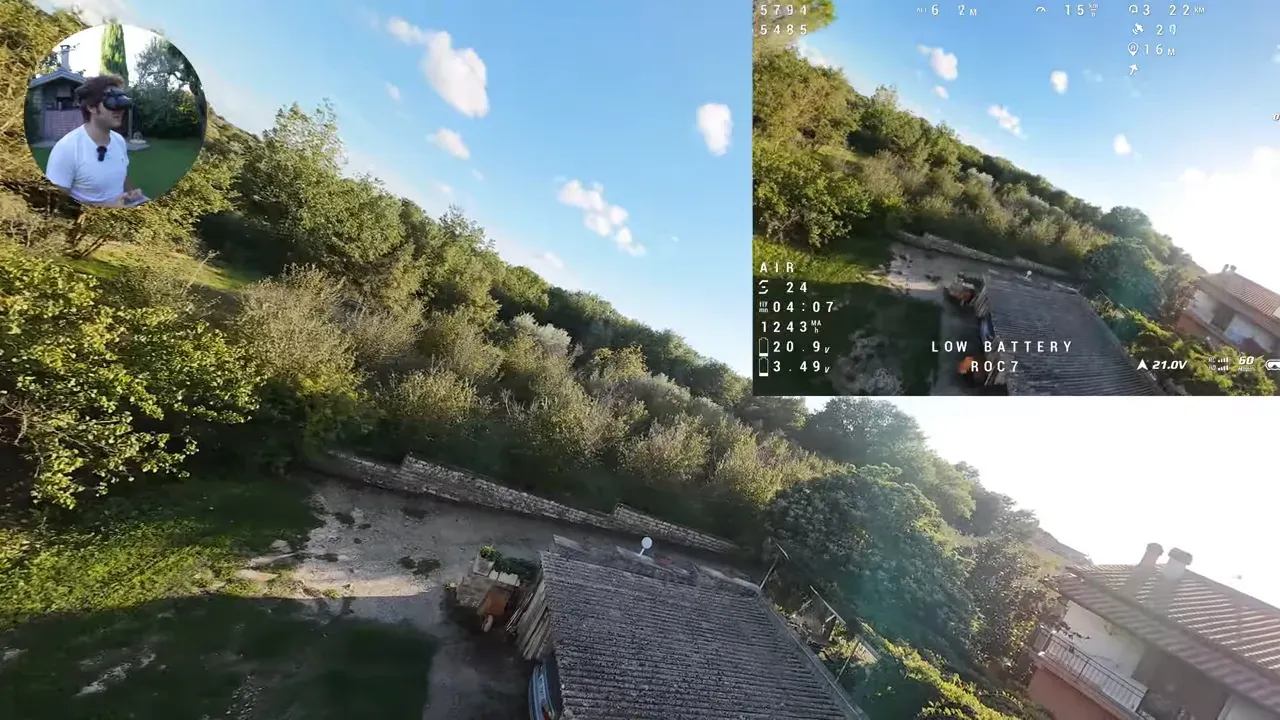
Rimzler suspects the manufacturer tuned with mid‑sized packs in mind. Lighter batteries amplify the spool‑up characteristic. He notes pilots should match battery mass to intended flying style to get the expected handling.
Range and endurance with 3300mAh 6S
The long run used the 3300mAh pack. Rimzler cruised out about three kilometres and kept the throttle conservative. Eleven minutes in, the telemetry read 3.3V per cell and consumed roughly 2850mAh. Given the battery was a year old, he judged 14 minutes reasonable with a fresh pack flown even more gently.

Quiet‑running at low throttle made the ROC7 sound similar to larger consumer drones — low pitch and subdued motor noise. That helps if the pilot wants stealthy long‑range overflight with decent video stability.
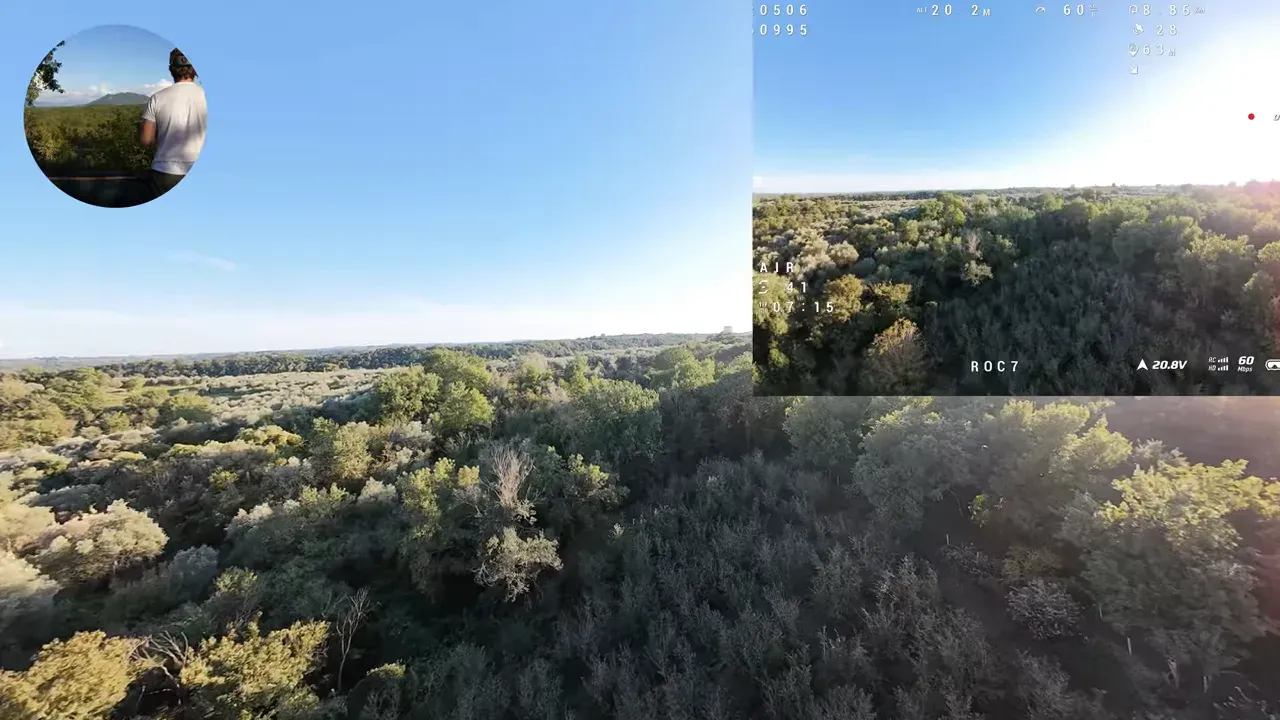
Efficiency and comparison with Mod 7
Rimzler expected the Roc7 to outperform a Mod 7 in efficiency due to lighter weight and higher‑KV motors. In field tests the energy consumption matched the Mod 7 despite the Roc7’s claimed advantages. Potential causes include prop choice, PID aggressiveness and the Roc7’s higher P/D values that keep it rock solid at the cost of extra current draw.
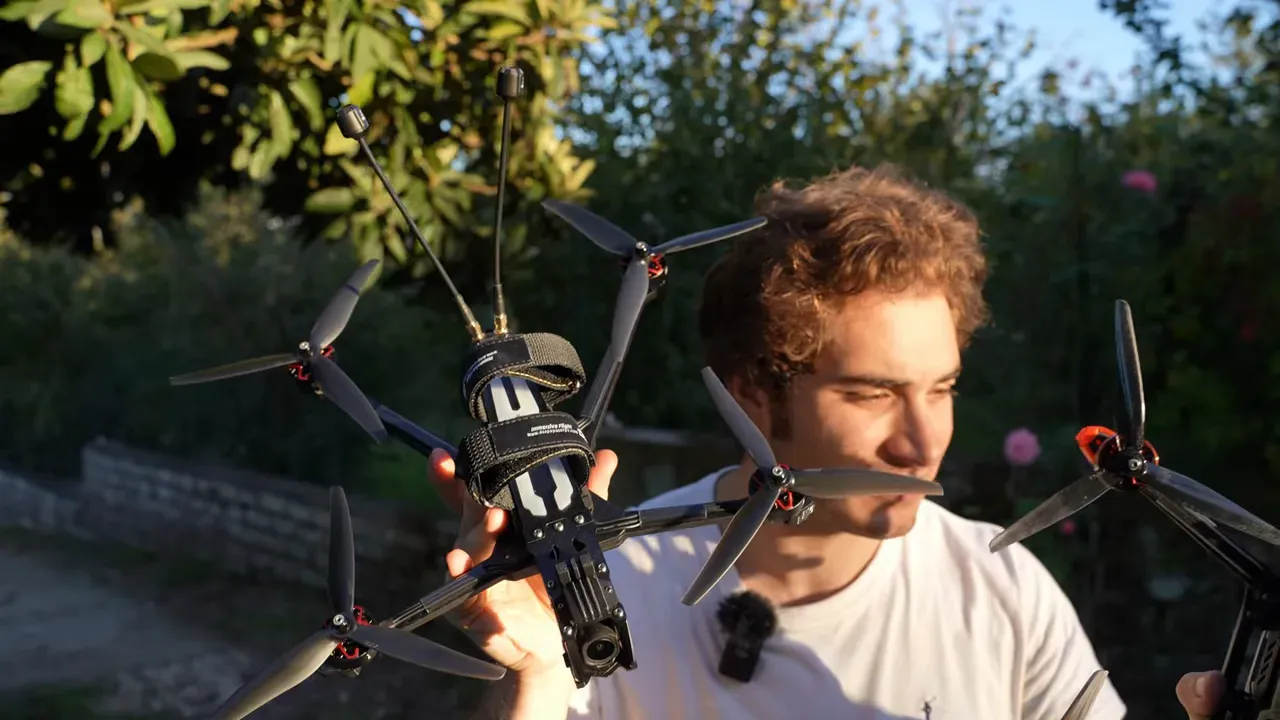
Rimzler plans prop swaps and PID tweaks to hunt further gains. He notes physics still matters — spin larger props efficiently or tune looser and you save amps. The Roc7 seems tuned for precision rather than absolute range out of the box.
Final verdict
The DeepSpace ROC7 succeeds at its stated goals. It delivers a refined build, quick GPS lock and a locked‑in tune that sits between a 5 and 6‑inch feel. It will not replace a lightweight freestyle 5‑inch for every pilot. However, it offers a compelling mix of range and handling for pilots who want to film mountains, fly long circuits or enjoy close‑range runs without lugging a heavy cine drone.
FAQ
Q: What battery size is best for a balance of agility and endurance? Rimzler recommends mid‑sized 2200–3300mAh 6S packs for balance. Smaller 1600mAh packs make the frame feel livelier but amplify prop spool effects.
Q: Is the GPS reliable for long‑range? Yes. The front‑mounted M10 GPS acquired 14 satellites within seconds and provided smooth RTH performance during tests.
Q: Can the ROC7 be freestyled hard? It can be used for casual freestyle and mountain dives. It’s not optimized for competitive freestyle that demands the reaction profile of a tuned 5‑inch.
Q: Why did the ROC7 use similar amps to the heavier Mod 7? Likely culprits: propeller choice, PID tuning and higher P/D values. Rimzler will test alternate props and tunes to verify.
Takeaway
- Solid build and clever layout — aluminium canopy, TPU holders, long battery pad.
- Fast GPS lock and reliable RTH — good for long‑range ops.
- Handles like a machine between a 5 and 6‑inch: agile, but props can push during spirals.
- Efficiency matched Mod 7 in tests — prop choice and PID likely factors.
- Recommended for pilots who want long range with good stick feel; not a 5‑inch freestyle replacement.
Takeaway box — quick reads for skimmers
- Roc7 locks 14 satellites in seconds — skip the faff and fly.
- Tune is tight — higher P/D gives rock stability, but may cost some amps.
- Pick battery to match style — 1600mAh = livelier; 3300mAh = endurance.
- Not a direct 5‑inch substitute — feels nearer 6‑inch in behaviour.
This article was based from the video Can a Long Range FPV Drone fly this Good? Deepspace Roc7


